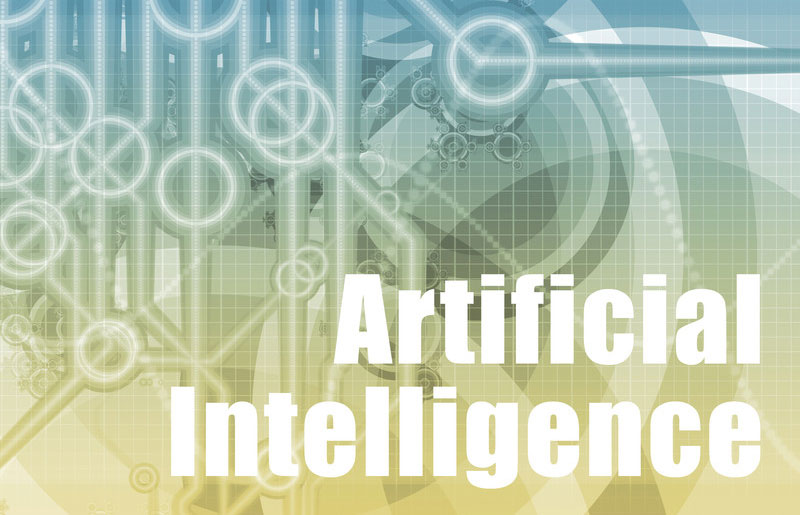Machine learning is enabling Artificial Intelligence (AI) to transform healthcare in many ways. Though computers and robots will probably never become substitutes for physicians and other medical personnel, AI has made huge strides and is impacting many areas in health care, especially medical diagnostics. Early detection is the best prevention as it will allow physicians to chart out the course of the treatment quickly. Similar to medical transcription outsourcing which relieves physicians of their electronic health record data entry burden, the goal of automating diagnosis is to allow physicians to focus more on other critical patient care issues and improve health care delivery.

Founded in 2012, the Human DX project is aimed at preventing misdiagnosis by helping physicians network with specialists from across the globe to get their own second opinions. The following are some of the latest AI applications in medical diagnostics:
- Chatbots: AI-chatbots are applications with speech recognition capability that can detect patterns in patient symptoms to arrive at a potential diagnosis and/or recommend an appropriate course of action. Once you enter your symptoms via chat, the chatbot will compare your symptoms against a database of diseases. Through a series of prompts and using a combination of your medical history and specific conditions, the chatbot will identify your potential illness. A recent TechEmergence article says that if a patient describes flu-like symptoms, the app may recommend getting over-the-counter medication from the pharmacy. On the other hand, for more serious symptoms, the chatbot might recommend a hospital visit or emergency care. According to Market research firm Grand View Research, the global chatbot market will reach $1.23 billion by 2025.
- Eye care: In 2017, a team of researchers from the University of Chicago, Stanford University, the University of California, San Francisco, and Google used eye scans from over 125,000 patients to create an algorithm that could detect retinopathy with over 90% accuracy. The team claimed that the results were similar to that provided by board-certified ophthalmologists.
- Heart disease: Heart disease is the leading cause of death in the United States and presents a considerable economic burden for the country. Researchers are exploring how AI can be used for early detection of heart disease. The latest uses of AI for managing heart disease include medical imaging applications to improve accuracy of patient scans, tools for risk prediction, and in ECG interpretation by automating the process of Atrial fibrillation (AFib) the most common sustained heart rhythm disorder.
- Oncology: Cancer is the second leading cause of death and treatment is expensive. Early detection and save lives and billions of dollars on care. Applications in deep leaning in oncology include cancer detection from gene expression, histopathologic slide analysis, tumor segmentation, and tracking tumor development. There are deep learning algorithms that can detect cancerous tissue at a level comparable to expert physicians. An algorithm developed by Stanford University researchers was trained to detect skin cancer or melanoma using thousands of images of skin lesions representing over 2,000 different diseases. Their study showed that the algorithm was on par with dermatologists’ ability in determining the best course of action across all images.
- Pathology: Pathologists examine tissue and bodily fluids such as blood and urine under a microscope to detect disease, a methodology which has remained unchanged for the past 100 years, according to Harvard Medical School. Machine learning technologies provide an edge over this manual method by improving the speed and accuracy of diagnoses. Researchers from Beth Israel Deaconess Medical Centre and Harvard Medical School have trained an algorithm with multiple speech recognition and image recognition capabilities to diagnose tumors. The algorithm had a diagnostic success rate of 92 percent, just four percentage points lower than the manual method’s rate of 96 percent.
- Rare diseases: Tech Emergence reports that a combination of facial recognition software and machine learning is helping in the diagnosis of rare diseases. Available only to trained clinicians, the Face2Gene app analyzes patient photos using facial analysis and deep learning to identify phenotypes associated with rare genetic diseases. The platform supports over 7,500 disorders and helps prevent false positives.
In May 2018, Harvard Business Review reported on the latest research in the field of machine learning. Researchers from the University of Chicago, Stanford University, the University of California, San Francisco, and Google fed de-identified electronic health record data on hundreds of thousands of patients into a series of machine learning algorithms powered by Google’s huge computing resources. The team reported that these algorithms could accurately predict and diagnose diseases, from cardiovascular illnesses to cancer, as well as related events such as the probability of death, the length of hospital stay, and the likelihood of hospital readmission.
What is unique about this study is that it outperformed traditional, clinically-used predictive models by using a deep learning approach that incorporated the entire EHR, including free-text notes, which produced predictions for a wide range of clinical problems and outcomes. The study could predict the entire set of primary and secondary ICD-9 billing diagnoses from a total of 14,025 codes.
Experts point out that while AI has much potential to improve medical diagnostics, it is still a relatively new approach and there is still a long way to go before it can be practically integrated into clinical practice, without undermining clinical expertise. However, as a medical transcription company, we are well aware that time is a valuable element when it comes to diagnosis and treatment. The delivery of timely and competent healthcare services can make the difference between life and death, or between healing and disability. AI combined with human intelligence can improve the speed and accuracy of preventative diagnosis, promote faster therapeutic decision-making, increase life span, and reduce costs of care.


